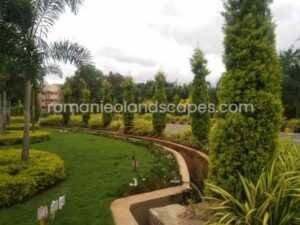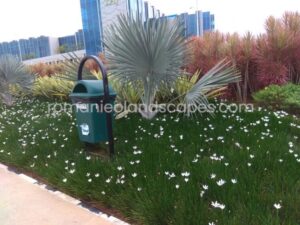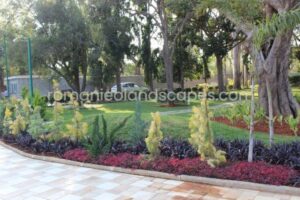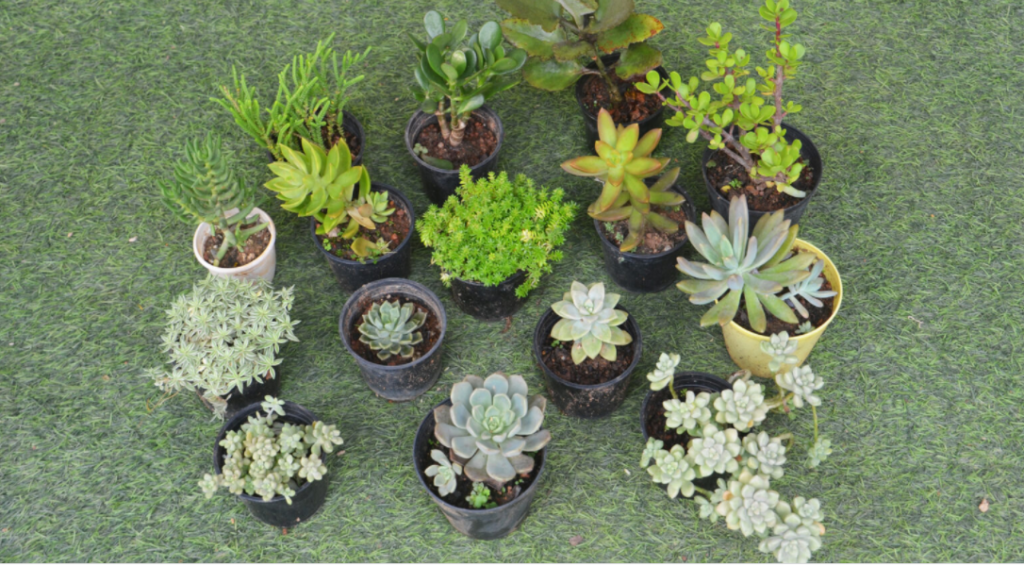Choosing Low Maintenance Plants for Your Garden
When choosing plants for your Garden, it is important to consider their ease of maintenance, as well as the space they take up. Low maintenance plants will take up less space and require less care than more elaborate plants. If you’re unsure what plants to choose, this article has some great tips for selecting between them.
Why choose low maintenance plants for your Garden
You may have already noticed that different plants have different requirements for water, light, and fertilizer. For example, the ficus tree requires more water than a succulent plant, but less sun exposure. So you should choose plants based on their needs. The ones with the least needs will be low maintenance plants. To be a good gardener you need to know your plants. In this case, it means that you should know which low maintenance plants to choose because the others are high maintenance.
High and Low Maintenance Plants: What's the difference?
There are a few significant differences that you should consider when choosing your plants. High maintenance plants require more work to keep them looking good, but they produce fruit and flowers much faster. Low maintenance plants often need less care but yield fruits and flowers at a slower rate. Sometimes, low maintenance plants produce fruits and flowers more abundantly than their high maintenance counterparts. The best way to know if a variety is high or low maintenance is to ask the nursery.
What plants can be invasive in my Garden?
Certain plants in the garden may be invasive in certain areas. For example, rhododendrons have been known to spread rapidly, whereas cedar trees are typically slow growing. When choosing a new type of plant for your garden, consider how it will grow and whether or not it is likely to be invasive. For example, many invasive grasses are fast-growing and can take over an area with only a few plants.
What plants are considered invasive ?. Some plants considered invasive are: Amazon Lily, Apple of Sodom, Alder Buckthorn, Asian Water Chestnut, Aztec Water Lilly, Brazilian Pepper, Canary Grass, Cape Jasmine, Chinese Water Chestnut, Chives, English Ivy, Englishman’s Foot and Sensitive Plant.You can prevent the spread of invasive plants by not planting them in your garden. But learn more about what is considered an invasive plant, ways to identify them , and how to control them. Some plants are considered invasive because they spread quickly, like cacti. These plants, like the prickly pear, can be very hard to control . Carefully hand pull invasive plants from your yard before you plant a new plant.Some plants, like the Brazilian Pepper , have been known to be invasive in some areas, but are not considered an invasive plant. Instead, they are native to the area in which they are found.
Some Low Maintenance Plants are
Succulents are great because they take up very little space, don’t require much water and can grow in full sun or partial shade. They can be kept indoors during the winter months, but need to be brought outside before the first frost.
Succulents are a great choice for small spaces and container gardening.
Step 1: Pro
Step 2.Watering Your Succulent Plant
Watering your succulent is an important part of the process. A succulent needs to be watered at least once a week, but you can water them more often if you wish. Depending on the type of succulent you’ve chosen, they need different amounts of water.
For example, a cactus needs a lot of water, so you’ll need to check the label when purchasing to see how much they require. Certain succulents thrive when they ’re watered too much. While others don’t do well when they get too little water, so it’s important to be able to tell the difference.
Step 3: Consider Your Succulent’s NeedsAs with most plants, succulents like their soil to be moist but not soaked, so you’ll need to water them regularly. You can also consider planting succulents in containers so they get more attention, and water them according to the type of container you’re using. For instance, if you’re growing them in a sink or dishpan, then just keep the soil moist and don’t expect them to grow much. It’s best to keep succulents in containers and move them around as often as possible, which will help keep the soil moist and give them more light.
Step 4: Find a Good Pot or ContainerUnlike most plants, succulents don’t require a lot of room. In fact, they grow so well in small spaces that you can keep them in a pot or container just three inches deep and have a flowering plant. If you need a larger container, try using a larger pot for the plant and then spreading the roots out in that pot. If you’re growing them indoors, you can keep them in small jars or cups with some drainage holes.
Step 5: Get Water on Their RootsAs succ ulents store water in their leaves, they’ll wilt and droop if the soil dries out. To prevent this, make sure that your succulents’ soil is moist, but not soaked. If the soil reaches the top of the pot, you can water them; however, it ‘s not necessary to water the soil every day, so don’t worry if they don’t. When you notice that your succulents’ leaves start to wilt a little, they’re probably just getting enough water.
Step 6: Prune the PestsIf you notice that your succulents are being attacked by pests, you’ll want to remove them from the soil and move them into a cup or jar of water. The easiest way to do this is to gently remove the pest from your plant, and put a small amount of water in a jar. If you don’t have a small enough jar, you should be able to cut a small cup or strip of paper to make it. You can also make a hole in the bottom of the pot to place the succulent in. You’ll want to put a small amount of water in with it before you do this, of course.
Low Maintenance Trees

There are many trees that are low maintenance, but they are not all the same. This guide will point out the different types of trees and how they fit into your garden. Evergreen Trees. These are trees that are evergreen throughout the winter months. They are cold-hard y and will last for a long time with minimal care. The most common evergreen is the pine tree.
These are trees that are ever green throughout the winter months. They are cold-hard y and will last for a long time with minimal care. The most common evergreen is the pine tree. Evergreen plants are plants that do not lose their leaves during the winter months, unlike deciduous plants. They are also some of the most popular and beautiful plants to grow in your garden. The best way to choose and care for evergreen trees is to identify what plant you want, then look at the plant’s characteristics. You will want to make sure that it is a hardy plant that can handle the cold temperatures of the winter months. You may also want to look at how much light it needs, as hardy plants will require more light than soft plants.
Low Maintenance Fruit Trees

One of the best things you can do for your garden is to create an environment that will allow your plants to naturally thrive. Though it may seem daunting, you can start this process by selecting low maintenance plants that require little to no extra care than what they would get in the wild. It can be intimidating to make the leap from traditional landscaping, but if you are looking to build a beautiful home with an edible garden at the center , then you will need to look into some of the best low maintenance fruit trees.
One of the first steps to take when looking for a low maintenance fruit tree is to understand the needs of the specific plant you are looking for. When picking a low maintenance fruit tree, it is important to take note of the plant’s growing needs and how it will perform in its new environment. Many plants that are considered low maintenance require little to no care and can be planted and harvested with ease. Others might require a little extra attention, but never more than is necessary to maintain their health and productivity. In order to determine plants that require little to no care, you must first take note of the type of soil it is adapted for. Different plants have different needs and will do best in different types of soil.
If you are considering planting a low maintenance fruit tree in your yard, remember to look at the soil in your area so you know what type of soil to use. It’s always better to look for a plant before you buy it, so you can be sure it suits your soil properly.I have never known a fruit tree not to thrive in my area, but they do suggest that you select a tree that has adapted to your location and the types of soil in your area. If you still want to do it on your own, I would suggest that you get to know your soil so you can tell what type it is and how well it will support your tree.
Low Maintenance Flowering Plants

There are some great flowering plants that you can plant that require very little maintenance. For example, the Peace Lily, Zinnia, Geraniums, and Lobelia all require very little attention. There are also some flowers that are perfect for planting near your pond or water feature because they need less water to survive. For example, the Water Umbel, Low Maintenance Zinnia’s that are perfect for planting around your pond or water feature.
Planting is not only about the flowers that you plant, it is also about the aroma that your house gives. There are some plants that can be used in your bathroom, bedroom, living room, etc. That will give you a wonderful aroma that can relax your mind. There are also some plants that are perfect for the kitchen. For example, the Bells of Ireland are perfect for your kitchen because they can last long. There are also some plants that are perfect for your bathroom. If you want to give your home a relaxing and relaxing atmosphere, this is the right thing that you need to do. For those who have children, there are some plants that can help you reduce the temper. In addition, there are also some plants that are good for you to help you enjoy a long life.
If you want to have a relaxing and peaceful environment in your house, the best thing that you can do is to prepare the right plants. There are also some plants that can make your living space look beautiful and relaxing. If you want to add more beauty to the room, then you need to consider getting some plants. Just keep in mind that depending on the type of plants that you are planning to add, you will need to consider the proper type of nutrients and water.
Edible Landscape Plants

Plants are cute and bring life to your garden, but do you really want to spend time growing them? If you’re looking for low maintenance plants that will grow well in your yard, then try some edible landscape plants. Plant Care: Tree & Shrub Maintenance. The following articles will help you get the best from your trees and shrubs. Main element , water, is essential. Some plants need more and some plants need less. Deciduous trees and shrubs remove the leaves in winter, so for them for the following winter sun is essential. Then there are evergreen species like holly and yew, which need light but not much water . Trees and Shrubs: Pruning, Cutting and Training If you want your plant to grow tall and straight, then pruning is the way to go. The plant will produce strong branches that will grow tall and straight. If you want to keep your plant small, then pruning is not the way to go. The plant will grow short and fat stems that will not grow tall. To prune your plant, you need to remove the unwanted parts. Cut the first branches that just form on your plant. The first branches are the most important ones because they will grow taller than other branches . Remove the branches 2-3 inches long. By cutting them, you will make room for other branches to grow longer and taller. There are several ways to prune your plant. You can even separate it into several plants, they will look more beautiful and full of life.
Conclusion
Now that you have chosen your plant, make sure to be in touch with it in order to nurture its growth. If you are not able to maintain the plant yourself, choose one that needs minimal attention, such as an ivy or a succulent.
If you are thinking of installing a low maintenance garden in your home, we at Romanieo Landscapes provide you with helpful tips and tricks to make sure that you have a successful installation.

